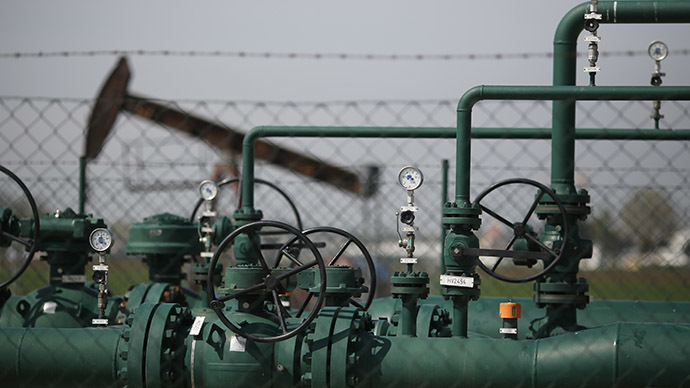Oil: OPEC’s Lengthy Suicide Note

A market flooding production strategy many saw as intending to kill the US-centric shale revolution, has, if anything, only made it stronger. In essence the OPEC cartel is signing its own death warrant.
As always the communique suggests harmony and continuity but behind the scenes this was apparently a more fraught OPEC meeting than most. The ‘swing producer’ Saudi Arabia managed to keep things going the way it wants, albeit by continuing to flood the market with oil below even its own cost of production.
The 30 million barrel per day output target stays, although that is being habitually broken by the members (30.93 million in April for instance). At the center of OPEC, Saudi Arabia is being heavily criticized by various countries whose production costs are significantly higher than even the $60 range to which crude prices have recently bounced back after ranging from a $115 peak to around $50 at the lows. Their squeals of pain are proportionate to their lack of reserves – the House of Saud has built up a large war chest over the years to play the energy market for perceived political gain. Bankrupt Venezuela and growing nations like Nigeria simply don’t have the cash reserve firepower to withstand the Saudi’s open taps flooding the market and pushing prices down.
However the greatest internal threat comes from Saudi Arabia’s old Persian foe. If Tehran convinces President Obama to remove sanctions, then the Iranians are already threatening to increase output by another million barrels per day. Thus the maths of OPEC’s mutually assured bankruptcy are growing.
The OPEC cartel has been threatened many times but actually this time it may be different. A perfect storm is attacking the oil industry. The perceived thrust of the OPEC decision to pump and be damned, was expected wash away the upstart shale producers of North America. This strategy has managed in the past to keep threats from the likes of Norway, the UK Brent fields and so forth in check. However, the problem is no longer one of single field producers upsetting the balance of the prevailing cartel. Now the threat is the hydrocarbon equivalent of the digital revolution.
Shale producers shuddered when the oil price plummeted and the number of US rigs dropped 24 weeks in a row from 1600 to around 600. The problem is the remaining rigs are producing more oil than the US pumped before.
The fracking revolution is inevitable. As Russian Energy Minister Aleksandr Novak noted the other day “By 2040, almost 65 million barrels of high-tech oil will be extracted per day, this includes shelf extraction, shale, deep-water extraction and so on.”
Remember: the current daily OPEC target is 30 million barrels per day.
In the United States, the oil industry has long been driven by some (often crazy) entrepreneurial folk who have pushed technology to profitably deliver our energy future. Last year, OPEC apparently conceived of a simple, ruthless move. Wipe out the relatively undercapitalized fracking ‘wildcatters’ and thus ensure the cartel’s future.
Thus all plans look exquisitely viable when viewed in the linear. In truth, the oil industry has always been built by lateral thinking mavericks. Faced with a direct attack on their model, the North Americans struck back as only they know how: raw ingenuity. ConocoPhillips’ CEO Ryan Lance remarked last week that break-even costs for US unconventional oil production has been cut by nearly a third since last November. They’re still falling – with $60 in sight, and $50 on the horizon. Technological ingenuity is driving a Moore’s law like technological advance (the Intel founder’s maxim: computer power doubles roughly every 2 years).
This ingenuity will, like the web enabling our interaction, soon go global, benefitting every continent which embraces the future. This process will genuinely reorient the world’s Middle Eastern-centric oil cartel.
One day (soon) we will look back at the way the world waited with baited breath to evaluate the latest, often arbitrary moves, from a cartel which held energy prices in its thrall for a half century and more... And wonder at how technology has freed us. The frack for freedom may have begun in the USA but our energy future is already being driven by unconventional high-tech production becoming the norm across the world. In the near future, expect Russia and other hydrocarbon powers to be energized as the Arctic brings us bounteous sources of cheap power to drive the world’s prosperity.
The statements, views and opinions expressed in this column are solely those of the author and do not necessarily represent those of RT.
The statements, views and opinions expressed in this column are solely those of the author and do not necessarily represent those of RT.













